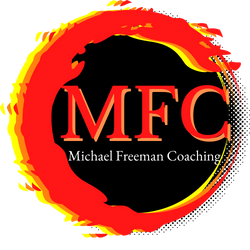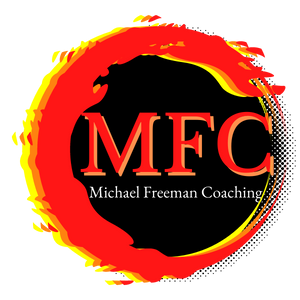The Process to Building Processes That Make Your Life Easier
Can you follow directions when they are given so that you can complete complex tasks?
How about a checklist?
Let's assume you are 99% of the population and say yes. You can follow both directions and a checklist.
Do these things help you accomplish tasks more quickly than if you were to try to achieve a given task without them?
What if the directions or checklist are things that you need to make for yourself and are to be used (at least for now) by you?
Would you even know where to start or why you would want to waste time outlining them for yourself?
As a life coach, mindset coach, and personal development coach in grand rapids, Michigan, I spend a lot of time helping people build a disciplined mindset behind process building because I know something they don't.
PROCESSES IMPROVE PRODUCTIVITY AND EFFICIENCY!!
I'd love to tell you that I was always good at doing this for myself, but honestly, what made me a master of efficiency processes was a simple desire to be extremely LAZY!
Yes, that's right, I said it. I got good at the building because I wanted to be lazy. My mindset was based on how quickly and efficiently I could complete tasks that I did not have the drive to finish so I could get to what I actually wanted to do.
At the time, I was in college and wanted to graduate, which meant I had to do the work.
(High school was much easier as I could cheat and pass the classes.) -- Don't judge me here. School isn't the type of environment my mind thrives in as it pertains to my learning process.
Doing school work was new to me.
I was annoyed with how long it took, so my active mind went to work to remove this frustration.
Over time, I developed the processes that would allow me to complete my master's degree in virtually zero time per week.
We could argue that building processes for your work are a facet of time management and the broad scheme, I would agree, but my goal here is to not explain time management to you here. I believe Tony Robbins does a great job in this blog titled "How To Increase Your Productivity."
So instead, I'd like to help you build the steps to building the processes that will help you create the time management and practical habits that will work!
Once you get good at this system, you will become a process master!
Where to start?
If you were to google creating process, you might find something similar to this:
Do the work yourself
Record ALL of your steps
Structure the steps as the big picture result
Take these big picture results from each step into smaller steps
Detail each small step into an explanation to bring context to each one.
I'll be honest, this made sense to me when reading it, but it all still seemed complex when considering a first-time adopter.
The above steps came from a blog. You can read the content here.
So here is how I would tell you how to build processes for life, relationships, personal development, career, leadership skills, business...whatever you want!
Step 1: Mindset first
Honestly, mindset is always first, but this is where I see my mind going when considering the building process.
I want to learn something.
I want to do this something well.
I want to do this something really fast.
The above is typically the conversation that is happening with me.
Step 2: Define what you want
Nothing can get better if you aren't sure what your desired outcome is.
There is no perfect outcome. So consider what you want and move on from there. You will likely better define the outcome you truly want as you learn.
Step 3: Do the work.
I find with all things, action, even if you aren't sure what to do or where to start, is the best approach.
Here is the obvious and logical why.
Action produces results.
Results are outcomes.
The outcomes you are getting can be compared to the outcomes you want, and this comparison helps you find the bottlenecks or the areas of a process that can be reworked in future steps. I'll talk more about this later.
Step 4: Write down the steps.
As you are working through the steps, write them down.
These steps are your process!
This is your rough outline!
For example, I was doing this right before I sat down to write this article.
My process for mowing the lawn:
1.) Find materials: Headphones, sunglasses, water, trash bag for dog waste, and shed key.
2.) pick up dog waste.
3.) mow backyard in sections.
4.) mow front yard without shoes because of the dumb hill that is hard to ascend and descend with them.
5.) check the bag frequently to ensure clippings are not all over the yard.
6.) put the lawnmower back and lock the shed.
Areas that this process has improved over time:
step 1.)
Crap, I forgot my headphones.
I'm thirsty but don't want to go inside.
I planned to pick up dog waste but had to go back inside to grab the trash bag.
It's bright outside. I wish I had my sunglasses.
Step 2.)
I stepped in dog waste because I forgot to pick it up before I started mowing.
Step 3.)
Tested various sectioned approaches
Step 4.)
Mowed front lawn with shoes slipping off, plus they were hot.
Mowed lawn with slide-on sandals, but they broke on the hill or fell off.
Barefoot, more traction and stability, plus I'm going to shower anyway.
Step 5.)
I mowed the lawn without a bag but found chunks of grass clippings everywhere.
Mowed lawn without a bag, but more frequently to find it was a waste of time and energy with little benefit of fewer clumps of grass everywhere.
Added a bag but forgot to empty it—same result.
I emptied the bag a ton of times to find a clean hard.
Step 6.)
A simple step that I didn't need to state or optimize.
This example is silly to some but demonstrates the process I use for literally everything and becoming faster at it all the time.
You might find that technology, systems, or tools in some tasks could be beneficial.
For example:
Because I have attention deficit disorder, I think fast. Moving fast or additional stimulation helps me focus.
Because of this, writing articles that you can read is challenging for me.
I hate proofreading.
I don't want to pay or wait on someone to proofread for me.
And my writing structure tends to be confusing to read at first glance and without edits because I think way faster than I can type.
Thank you to friends, family, and community members for informing me when I've made these errors. 😘
This has prompted me to purchase a Grammarly subscription to help catch the errors created by my fast thinking and lazy proofreading.
This technological tool has made me much better at writing articles while allowing me to maintain my comfortable writing style and strategies.
*Important Note*
This adaptation in my process came from taking action and reviewing the outcome I was getting!
Start at the first step! Don't skip steps!
Step 5: Find the bottleneck and adapt.
As you are working through your task or goals, pay attention to things that are frustrating you, taking a long time, or delivering an outcome that does not align with the overall goal you are trying to reach.
These feelings and situations are the triggers to adapt to these areas.
In my article writing example, I hated proofreading when I would go to do it.
I would put in a half-hearted effort, and when I had someone else proof it, I'd get annoyed with how long they took to return my work or the feedback they gave me regarding advising me to change my overall message.
These feelings and the feedback from others helped me identify a bottleneck and then, in turn, seek a tool or resource that could meet my process efficiency needs.
Other strategies that help
Checklists - Use these for any process that is intensive or needs to be the same each time.
Example: As a business owner who works with clients. I want the process for how I acquire and onboard clients to be the same each and every time.
Calendar - This is great for ensuring you do whatever the action steps are.
Google - A great place to start when you don't know where to start. (which is interestingly apparent, yet I still find myself reminding clients and mentees that this is a resource that helps provide insight.)
Other Experts - I constantly study others in my field to see the strategies and tactics they use so I can become aware of processes, tools, and systems that I might not be aware of that could help me become more efficient.
The intangible benefit of building processes
Once you have a working process or system, you can teach it to others, and this is where you can bridge the gap in your life, business, or relationships.
You have an excellent process for doing laundry. Use your system as a tool for helping your kids become proficient in doing it well while also taking work off your plate!
Your system for selling a product in your organization is world-class? Teach it to your peers so you can position it for a promotion!
Or sell it to others in your industry and start your own business!
Want to learn more about processes? Then check out some similar topics that tie into this that I've written about recently.

